The NFT market has evolved from speculative hype into a legitimate digital economy. Monthly active NFT buyers continue growing despite market corrections, signaling a shift from speculation to genuine collecting behavior. For entrepreneurs looking to capitalize on this trend, understanding how to build an NFT marketplace represents a significant business opportunity.
Understanding NFT Marketplace Fundamentals
An NFT marketplace is a digital platform where users can create, buy, sell, and trade non-fungible tokens representing unique digital or physical assets. Unlike cryptocurrencies that are interchangeable, each NFT contains distinct information making it irreplaceable and verifiable on the blockchain.
Successful marketplaces like OpenSea, Rarible, and Blur have demonstrated various business models. Some focus on art and collectibles, others specialize in gaming assets, virtual real estate, or tokenized real-world assets. Your marketplace positioning determines technical requirements and target audience.
Essential NFT Marketplace Features
Smart Contract Infrastructure
Smart contracts form the backbone of any NFT marketplace. These self-executing contracts handle minting, ownership transfers, royalty distributions, and transaction settlements automatically. Most marketplaces use ERC-721 or ERC-1155 token standards on Ethereum, though alternatives like Solana, Polygon, and Binance Smart Chain offer lower transaction costs.
Your smart contracts must support royalty mechanisms ensuring creators earn percentages from secondary sales. This feature distinguishes NFT marketplaces from traditional digital asset platforms and provides ongoing income for artists and content creators.
User-Friendly Minting Interface
The minting process converts digital files into blockchain tokens. Your marketplace should simplify this technical process, allowing creators to upload artwork, set descriptions, define royalties, and mint NFTs without understanding blockchain complexities.
Support multiple file formats including images, videos, audio files, and 3D models. Implement IPFS (InterPlanetary File System) for decentralized storage ensuring NFT assets remain accessible even if your platform experiences downtime.
Auction and Fixed Price Sales
Flexible selling mechanisms accommodate different creator preferences. Timed auctions create excitement and competition among buyers, often driving higher prices for premium pieces. Fixed-price listings provide immediate purchase options for buyers who prefer certainty.
Reserve prices protect creators from selling below desired minimums. Buy-now options during auctions let impatient buyers secure items immediately at premium prices.
Wallet Integration
Seamless cryptocurrency wallet connections enable users to interact with your marketplace. Support popular wallets like MetaMask, Trust Wallet, Coinbase Wallet, and WalletConnect. Multi-wallet compatibility increases accessibility for diverse user bases.
Implement clear wallet connection workflows with security warnings and transaction confirmations. Users should understand gas fees before confirming transactions to avoid confusion and support complaints.
Discovery and Search Functionality
As your marketplace grows, robust search and filtering become critical. Users should find NFTs through categories, collections, price ranges, blockchain networks, and metadata attributes. Trending sections, featured collections, and curated galleries help users discover quality content.
Implement tagging systems allowing creators to categorize work accurately. Advanced filters for traits and properties help collectors find specific NFTs within large collections.
Technical Architecture Considerations
Blockchain Selection
Ethereum combined with layer-2 solutions remains the top destination for new developers in 2025, but evaluate multiple chains based on your target market. Ethereum offers maximum liquidity and established user bases but charges higher gas fees. Solana has seen builder interest increase by 78% in recent years, offering faster transactions and lower costs.
Polygon, Arbitrum, and Optimism provide Ethereum compatibility with reduced fees through layer-2 scaling. Multi-chain support allows users to choose networks based on their preferences and cost considerations.
Backend Infrastructure
Your marketplace backend manages user accounts, transaction histories, metadata storage, and administrative functions. Use scalable cloud infrastructure that handles traffic spikes during popular drops or viral moments.
Database architecture must efficiently store and retrieve NFT metadata, ownership records, transaction histories, and user profiles. Implement caching strategies for frequently accessed data to maintain performance under heavy loads.
Frontend Development
Responsive design ensures seamless experiences across desktop browsers, tablets, and mobile devices. The interface should feel intuitive for both crypto-native users and mainstream audiences unfamiliar with blockchain technology.
Real-time updates for auction bids, sales, and new listings keep users engaged. WebSocket connections provide instant notifications without requiring page refreshes.
Development Approaches and Costs
Custom Development
Building from scratch offers maximum flexibility but requires substantial investment. Expect $80,000 to $300,000 for comprehensive custom development including smart contracts, frontend, backend, and mobile applications. Development timelines span 6 to 12 months depending on feature complexity.
Custom development makes sense when targeting unique niches requiring specialized functionality not available in existing solutions. This approach provides complete control over user experience and business logic.
White Label Solutions
White label NFT marketplace platforms reduce costs to $15,000 to $80,000 with deployment timelines of 2 to 6 weeks. These solutions provide tested infrastructure, security features, and administrative tools ready for customization.
White label platforms suit entrepreneurs who want to enter the market quickly without reinventing technical infrastructure. Focus your resources on community building, creator relationships, and marketing rather than solving technical challenges.
Security and Legal Considerations
Smart Contract Audits
Security vulnerabilities in smart contracts can result in catastrophic losses. Professional audits by firms like CertiK, Quantstamp, or OpenZeppelin identify potential exploits before deployment. Budget $10,000 to $50,000 for comprehensive audits depending on contract complexity.
Implement multi-signature wallets for administrative functions requiring approval from multiple parties before executing critical operations. This reduces risks from compromised accounts or insider threats.
Intellectual Property Management
NFT ownership represents blockchain-verified authenticity, not necessarily copyright or intellectual property rights. Clearly communicate what buyers receive with purchases. Implement content verification processes preventing unauthorized minting of copyrighted material.
DMCA takedown procedures and reporting mechanisms allow rights holders to challenge unauthorized use of their intellectual property. Proactive moderation protects your marketplace reputation and reduces legal exposure.
Regulatory Compliance
Regulatory agencies worldwide are increasingly scrutinizing crypto firms, ensuring compliance with anti-money laundering frameworks and investor protection standards. Implement KYC verification for high-value transactions and seller accounts to prevent money laundering and fraud.
Consult legal experts familiar with securities regulations to determine whether certain NFTs might be classified as securities requiring additional compliance measures. Geographic restrictions might be necessary for specific NFT types or jurisdictions.
Monetization Strategies
Transaction Fees
Platform fees typically range from 2% to 5% of sale prices. This represents your primary revenue stream. Balance fees competitively against established marketplaces while ensuring profitability.
Separate fees for buyers and sellers or charge single-sided fees create different incentives. Experiment with fee structures determining what resonates with your community.
Minting Fees
Charge creators for minting NFTs on your platform. These fees offset gas costs and generate revenue even before sales occur. Consider free minting for verified creators to attract premium talent while charging standard users.
Premium Features
Subscription tiers offering enhanced visibility, analytics, promotional tools, and reduced fees create recurring revenue. Professional creators and serious collectors value additional features justifying subscription costs.
Verified badges for prominent creators, featured placements in marketplace sections, and dedicated support tiers represent additional monetization opportunities.
Marketing and Community Building
Creator Partnerships
Successful marketplaces cultivate strong creator communities. Partner with established artists, musicians, and digital creators who bring existing audiences to your platform. Exclusive drops and featured collections generate initial momentum.
Provide marketing support, promotional tools, and educational resources helping creators succeed. Their success directly correlates with marketplace growth and transaction volumes.
Social Media Engagement
Active communities on Twitter, Discord, Instagram, and TikTok build awareness and engagement. Share featured artwork, creator stories, and marketplace updates regularly. Community managers who understand both art and crypto foster vibrant ecosystems.
NFT market volume may not be near its 2022 peak, but the number of monthly active buyers has been growing, signaling a shift from speculating to collecting. This trend favors marketplaces emphasizing genuine community and cultural value over pure speculation.
Educational Content
Many potential users remain unfamiliar with NFTs, wallets, and blockchain technology. Educational content demystifying these concepts expands your addressable market beyond crypto natives. Guides, tutorials, and webinars build confidence among mainstream audiences.
Future Trends and Opportunities
The integration of tokenized real-world assets is emerging as a formidable trend, with crypto exchanges becoming the best spots to list these tokenized assets. NFT marketplaces supporting tokenized real estate, commodities, and physical collectibles will attract traditional investors seeking digital asset exposure.
AI-powered features including personalized recommendations and automated trading strategies will enhance user experiences. AI can analyze collector preferences, suggest relevant NFTs, and identify emerging artists worth following.
Ready to build your NFT marketplace? Partner with experienced blockchain developers who understand both technical requirements and marketplace dynamics. With proper planning, quality execution, and community focus, your platform can capture share in the evolving NFT ecosystem.






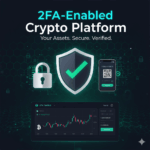
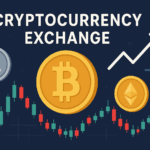


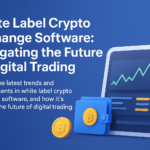
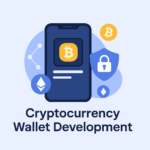

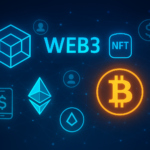


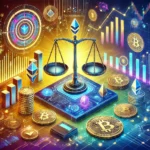
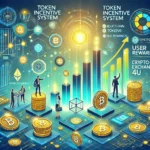

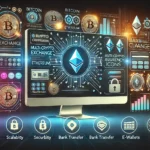
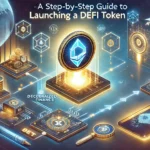

0 Comments